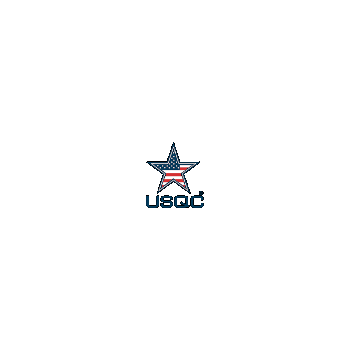ISO 45001:2015
Occupational Health & Safety Management System
Standard Overview
ISO 45001 is the internationally recognised Occupational Health & Safety (OH&S) Management System Standard. It was introduced in March 2018 to replace, and expand upon, the guidelines in the OHSAS 18001 Standard.
The Standard sets out the requirements for an organisation wishing to ensure a safe and healthy workplace, and to prevent work-related accidents and ill-health. It also includes mechanisms that will enable an organisation to meet its Health & Safety obligations.
An ISO 45001 certification is an excellent way of demonstrating your commitment to the welfare of your employees, suppliers and customers. The independent assessment process verifies that your organisation has implemented a structured Occupational Health and Safety management system, increasing stakeholder confidence, enhancing your brand and giving you a competitive advantage.
Our experienced QMS consultants can guide you through the ISO 45001 implementation and certification process, producing an OH&S management system for you and conducting the independent assessment to verify that you have:
- Implemented a robust OH&S management system
- Conducted suitable planning and risk assessments
- Provided adequate health and safety training for employees
- Raised employee awareness of health and safety policies
- Communicated the benefits of your OH&S management systems to stakeholders
- Strengthened your ability to respond to emergency situations
- Established performance monitoring and continual improvement processes.
Certification Benefits
The benefits of ISO 45001 to your business can be substantial, from complying with changes in legislation to preventing accidents, cutting the cost of claims and protecting your employees. Implementing the standard’s compliant management system will quickly help you reduce risks to your organisation. It includes processes for identifying hazards and establishing emergency procedures.
Making your organisation a safer place to work is good for productivity because it leads to fewer disruptive incidents and it also helps to raise employee morale. While the flexible nature of the ISO 45001 Management System will help to ensure you can adapt to future changes in legislation.
In summary, ISO 45001 provides an enhanced and up-to-date approach to OH&S, addressing risks and opportunities in a more structured manner than previously recognised OH&S Management Systems such as OHSAS 18001.
Certification Requirements
Clause 4 Context of the Organization
Section 4 requires each organization to analyze and understand the context of its activities, both externally and internally, and understand the needs of interested parties. Among other things, this will include understanding legislation, employee, stakeholder and shareholder requirements. It will also go a long way towards defining the scope of your OH&S management system. It is also worth noting that the standard requires this to be retained as documented information, and is a key part of ISO 45001 structure.
Clause 5 Leadership and Worker Participation
The Leadership section encourages both management commitment and involvement from employees. This gives an implied outcome that health and safety should become embedded in an organization’s activities, as opposed to the concern of one responsible individual, as was possible in the past under the terms of OHSAS 18001. For example, sharing tasks and responsibilities across the team can ensure that knowledge is shared, and multiple team members become proficient in the running of the system. This allows consolidation of the culture and reinforcing the importance of OH&S within the organization.
Clause 6 Planning for the OH&S System
Planning to avoid undesired outcomes such as failures to meet legislation or the risk of employee injury is at the heart of the ISO 45001 standard, which now recognizes “opportunity” as a key element of OH&S activities. Critically, Section 6 deals with objective-setting for the OH&S management system, and there are also requirements to document some aspects of this section.
Clause 7 Support
Clause 7 covers “support” elements such as communication, competence and awareness and documented information as well as resources. These specific requirements should ensure that the OH&S management system is more aligned with the activities of the business as a whole than may have been the case under OHSAS 18001. In your organization it is important to ensure that top management play a leading part in the communication process, and that employees are consulted when key information is recorded as documented information. Such decisions can ensure that the business objectives and the OH&S management system are closely related.
Clause 8 Operation
Operational controls and emergency preparedness and response are addressed in Clause 8. This clause is now more specific about outsourcing and procurement management, meaning that organizations must ensure that the responsibility for risk is retained by management and not passed on to contractors. Effective operational control is a critical factor in any health & safety management system, particularly in terms of managing contractors. Paying close attention to this clause will prove to be of benefit to most organizations.
Clause 9 Performance Evaluation
Monitoring and measuring the OH&S management system performance, including compliance to legislation and internal audit results, is covered in clause 9. This section also emphasizes that management must review the OH&S management system performance to ensure effective performance. There is a distinct advantage of ensuring that top management is involved in performance evaluation as would be the case with objective setting, thereby allowing actions for continual improvement to be considered as a result.
Clause 10 Improvement
The last clause sets out how an organization must ensure that continual improvement is derived from the OH&S management system. This can include dealing effectively with non-conformance and employing a good corrective action process. In real-life situations, it can pay to involve the team in corrective action processes, as nobody will be more effective at defining the root cause of an issue than those directly involved in the process. Likewise, this will ensure that the team who are responsible for the prevention of reoccurrence have possession of the full facts and can be vigilant against a repeat non-conformance, laying the foundation for improved performance.



